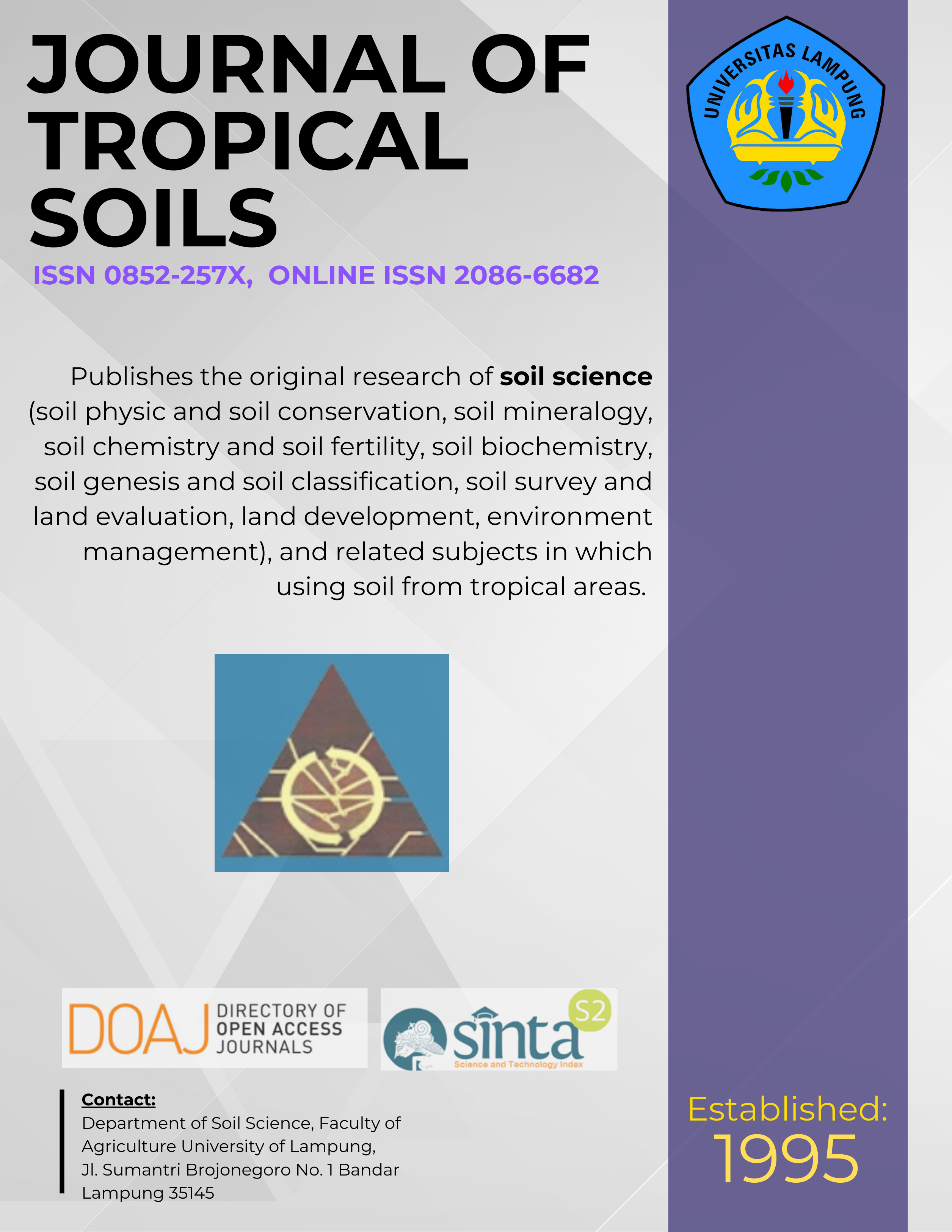Konversi Hutan Menjadi Lahan Usahatani Karet dan Kelapa Sawit serta Pengaruhnya terhadap Aliran Permukaan dan Erosi Tanah di DAS Batang Pelepat
Main Article Content
Abstract
Forest conversion to some land use happened in all watershed, includes Batang Pelepat watershed. The objectives of this research are to know effect of forest conversion to land of rubber (Hevea brasiliensis) and palm oil (Elaeis guinensis Jack) farming on run off and soil erosion and different of erosion rate on agro technology of rubber and palm oil farming in Batang Pelepat watershed. The research was carried out during 3 months, begin October to December 2006. Run off and soil erosion measured plot with gutter in the lower of plot. Experimental design for this research is randomized complete block design, with land use type as treatment and slope class as replication or block. Data analyzed statistically by variance analysis (F-test) and Duncan New Multiple Range Test on confidence 95% (α = 0.05). The results of this research show that area of forest coverage in Batang Pelepat watershed was decreasing. In 1986 this area still 94,50% of watershed area, but in 1994 area of forest only 78,17% and in 2006 forest area 64,20% of watershed area. Forest conversion was carried out to land of rubber and palm oil farming with some actual agro technologies. Land of monoculture rubber I resulted the highest run off and soil erosion more than the other land use type and showed different of run off and soil erosion on land of secondary forest.Â
Downloads
Download data is not yet available.
Article Details
Section
Articles
License for Authors
Authors who publish with this journal agree to the following terms:
- Authors retain copyright and grant the journal right of first publication with the work simultaneously licensed under a Creative Commons Attribution License that allows others to share the work with an acknowledgement of the work's authorship and initial publication in this journal.
- Authors are able to enter into separate, additional contractual arrangements for the non-exclusive distribution of the journal's published version of the work (e.g., post it to an institutional repository or publish it in a book), with an acknowledgement of its initial publication in this journal.
- Authors are permitted and encouraged to post their work online (e.g., in institutional repositories or on their website) prior to and during the submission process, as it can lead to productive exchanges, as well as earlier and greater citation of published work (See The Effect of Open Access).
License for Regular Users
Other regular users who want to cite, distribute, remix, tweak, and build upon author’s works, even for commercial purposes, should acknowledge the work’s authorship and initial publication in this journal, licensed under a Creative Commons Attribution License.
How to Cite
Konversi Hutan Menjadi Lahan Usahatani Karet dan Kelapa Sawit serta Pengaruhnya terhadap Aliran Permukaan dan Erosi Tanah di DAS Batang Pelepat. (2008). JOURNAL OF TROPICAL SOILS, 13(3), 253-260. https://doi.org/10.5400/jts.2008.v13i3.253-260

